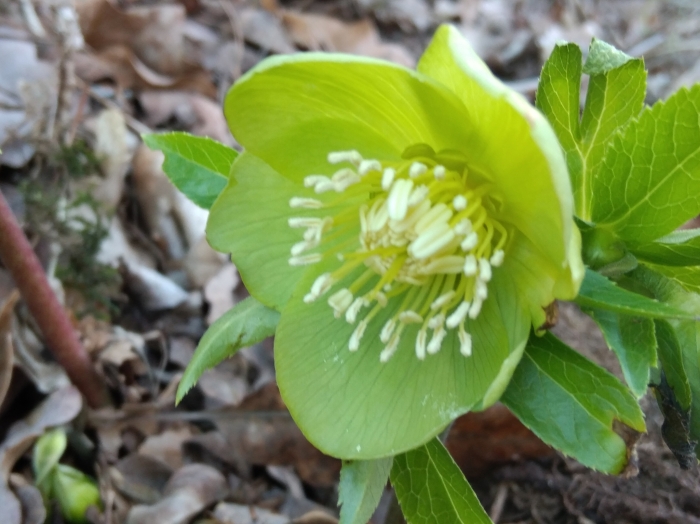Fragrant Hellebore
(Helleborus odorus)
Fragrant Hellebore (Helleborus odorus)
/
/

Ben Costamagna
CC BY 4.0
Image By:
Ben Costamagna
Recorded By:
Copyright:
CC BY 4.0
Copyright Notice:
Photo by: Ben Costamagna | License Type: CC BY 4.0 | License URL: http://creativecommons.org/licenses/by/4.0/ | Rights Holder: Ben Costamagna | Publisher: iNaturalist | Date Created: 2022-02-12T08:54:09-08:00 |

























Estimated Native Range
Summary
Helleborus odorus, commonly known as Fragrant Hellebore or Sweet Hellebore, is an evergreen perennial herb. It is native to open woodlands and forest edges in Southeastern Europe, particularly thriving on calcareous (limestone) soils. This species is slow-growing, reaching a height of 1-1.5 feet (0.3-0.5 meters) and spreading 1.5-2 feet (0.5-0.6 meters). The Fragrant Hellebore is notable for its leathery, dark green leaves and its green or cream flowers, which are showy and emit a pleasant fragrance when they bloom in late winter to early spring.
The Fragrant Hellebore is valued for its early flowering period, providing interest in the garden when few other plants are in bloom. It is also appreciated for its evergreen foliage, which adds texture and color year-round. Commonly used in shaded borders, woodland gardens, and as ground cover, it is a low-maintenance plant once established. It prefers part shade to full shade and thrives in moist, well-drained loam or clay soils rich in organic matter. While generally disease-resistant, it can be susceptible to hellebore leaf spot and should be monitored for aphid infestations. It is also deer-resistant, making it a good choice for gardens in areas with high deer populations.CC BY-SA 4.0
The Fragrant Hellebore is valued for its early flowering period, providing interest in the garden when few other plants are in bloom. It is also appreciated for its evergreen foliage, which adds texture and color year-round. Commonly used in shaded borders, woodland gardens, and as ground cover, it is a low-maintenance plant once established. It prefers part shade to full shade and thrives in moist, well-drained loam or clay soils rich in organic matter. While generally disease-resistant, it can be susceptible to hellebore leaf spot and should be monitored for aphid infestations. It is also deer-resistant, making it a good choice for gardens in areas with high deer populations.CC BY-SA 4.0
Plant Description
- Plant Type: Herb
- Height: 1-1.5 feet
- Width: 1.5-2 feet
- Growth Rate: Slow
- Flower Color: Green, Yellow
- Flowering Season: Spring, Winter
- Leaf Retention: Evergreen
Growth Requirements
- Sun: Part Shade, Full Shade
- Water: Medium
- Drainage: Medium, Slow
Common Uses
Border Plant, Deer Resistant, Fragrant, Low Maintenance, Street Planting
Natural Habitat
Native to open woodlands and forest edges on calcareous soils in Southeastern Europe
Other Names
Common Names: Sweet Hellebore
Scientific Names: , Helleborus odorus, Helleborus decorus le, Helleborus decorus le, Helleborus hunfalvyanus var. odorus, Helleborus odorus, Helleborus odorus var. intermedius, Helleborus viridis var. atrovirens, Helleborus viridis var. odorus,
GBIF Accepted Name: